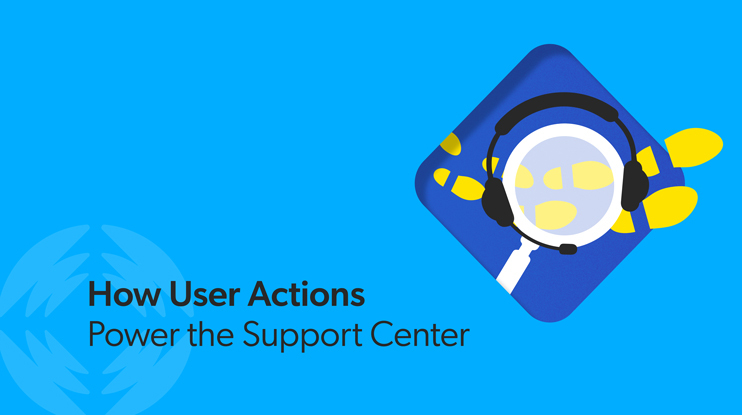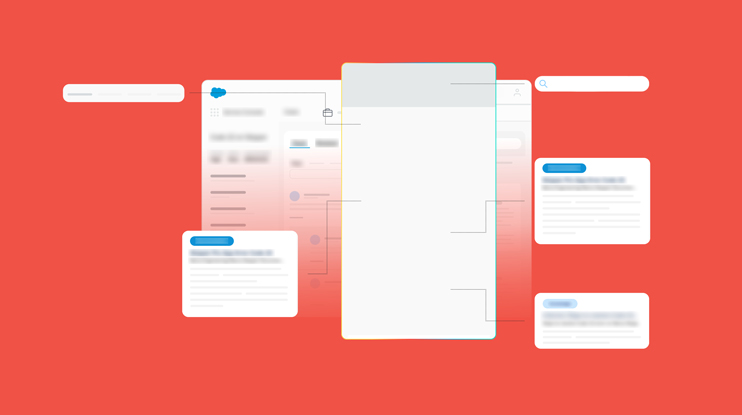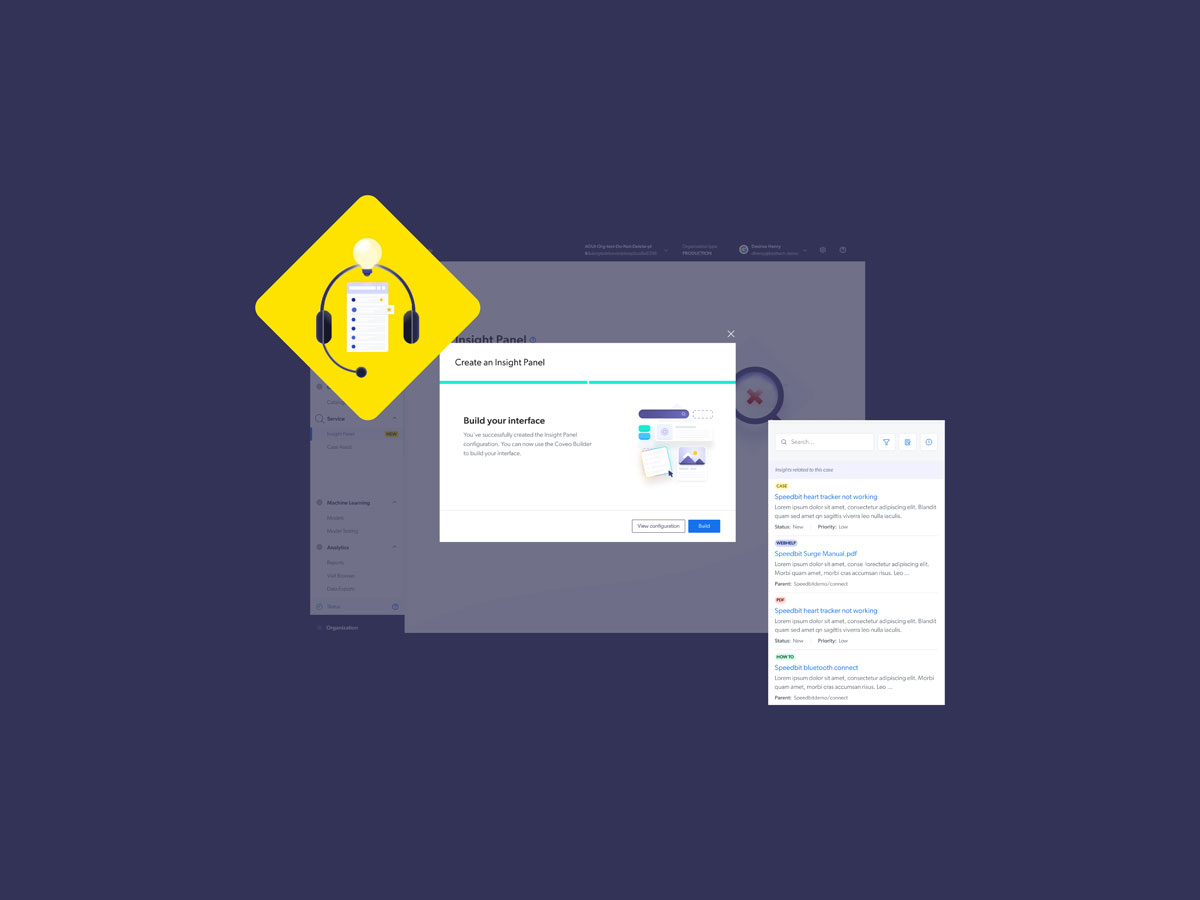People tell us so much about their needs when they contact customer support, often long before the interaction itself. They search the website for their issue. They read support articles, click through to recommended content, each touchpoint part of a bigger story.
The purpose of User Actions is to present this story to support agents. Recently, the Coveo team undertook a considerable update to User Actions based on customer adoption, feedback, and other data. In this blog post, I’ll detail those updates, as well as the genesis behind User Actions and its home within the Coveo suite of solutions, the Insight Panel.
How Insight Panels Embed Context Within the Agent’s Flow of Work
The most excruciating customer support experiences all seem to have one thing in common: they’re rife with if the agent had only known.
If the agent had only known that their customer had already tried uninstalling and reinstalling the application, they’d have ruled that process out as a potential fix.
If the agent had only known that the customer already viewed the KB article for “how do I renew my license” three times, they’d have started with that topic straightaway.
The problem stems from a perennial stick in the support agent’s craw: context switching.
Critical Issue: Too Much Time Spent Looking in Too Many Places
Because many of the programs that comprise a support organization’s tech stack aren’t interoperable, agents are forced to log in and out of different places looking for information. What’s more, the agent has to rush around between windows so the customer isn’t left waiting.
For especially regulatory-minded industries like healthcare and finance, there’s an additional running clock that agents work against: automatic log-outs that happen for security purposes.
Throughout all of this context switching, support agents struggle to see the complete picture. Critical details about the case slip through the cracks.
This is where the Insight Panel works its magic. The Insights Panel integrates with CSM or CRM systems (chiefly Salesforce and Zendesk) to give agents contextually relevant information without making them leave the case record they’re working in or even switch browser tabs and windows.
The panel is one place to see what the customer searched for and clicked on, whom they’ve already spoken to, and more.
Putting Customer Insights at Agents’ Fingertips
Coveo built the Insight Panel for direct embedding into the agent workflow, thus eliminating the need to navigate between windows (and the errors and stress that tend to result). Most of the Insights Panel experience is customizable, too, allowing support organizations to tailor this functionality to suit their particular needs.
This includes User Actions, an important feature of the Coveo Insight Panel. Powered by the User Profile service, User Actions shows support agents what resources a customer consulted before or after they sent their cases. The goal is to provide more context so agents avoid suggesting solutions that the customer has already tried.
Until recently, the philosophy behind User Actions was to present agents with as much information as possible. The more context the better, right? As such, the feature would present the last 2,000 events on the timeline for a given user (user queries, clicked documents, page views, and so on).
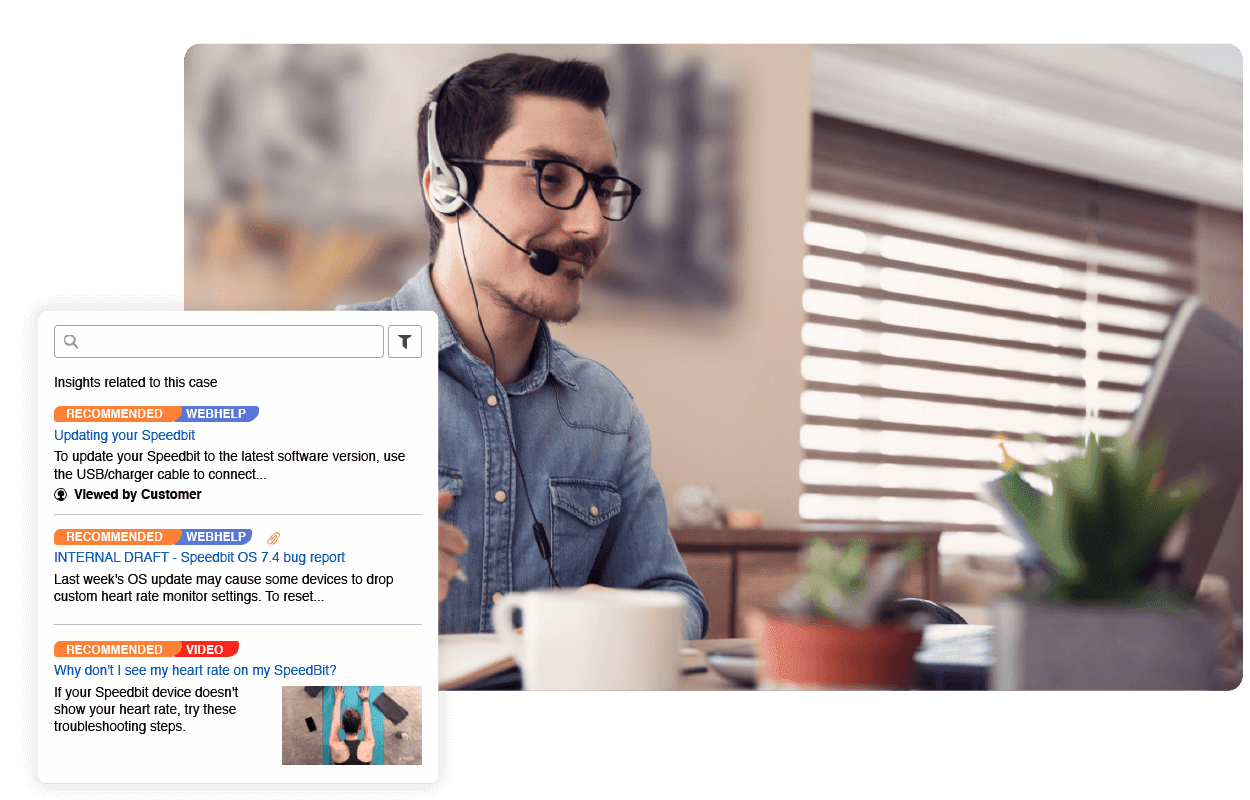
While it’s important to give agents context, too much information can be a problem too. The goal, after all, is to make sure agents see the most pertinent information right when they need it. So when the overwhelming feedback from Coveo’s own customers suggested a need to narrow the focus of User Actions, the Coveo team responded.
Meet the New and Improved User Actions Panel
Thank goodness for user feedback. It’s what the Coveo team relied on to rescope the events included in the User Actions section of the Insight Panel.
Today, sessions comprise the timeline presented within the User Actions interface. User Actions now displays sessions events much closer to when the case was actually submitted (i.e., agents see what happened shortly before the session began that led to the case).
This way, agents see information that is most closely related to the particular case they’re dealing with.
The Coveo team also centralized the User Actions timeline into a single view — one timeline that focuses on the case creation event. Within that timeline, agents will see handy snippets of information, such as where a particular event took place (for example, in a chatbot, the community homepage, or the documentation website search page) and the date and time of the event. Furthermore, when scanning through the content recommended to agents to solve the case, they will see handy labels, such as “Viewed by Customer”, so they know exactly what the customer has and hasn’t already looked at.
The result is a refreshed, more scannable experience with a lot less noise.
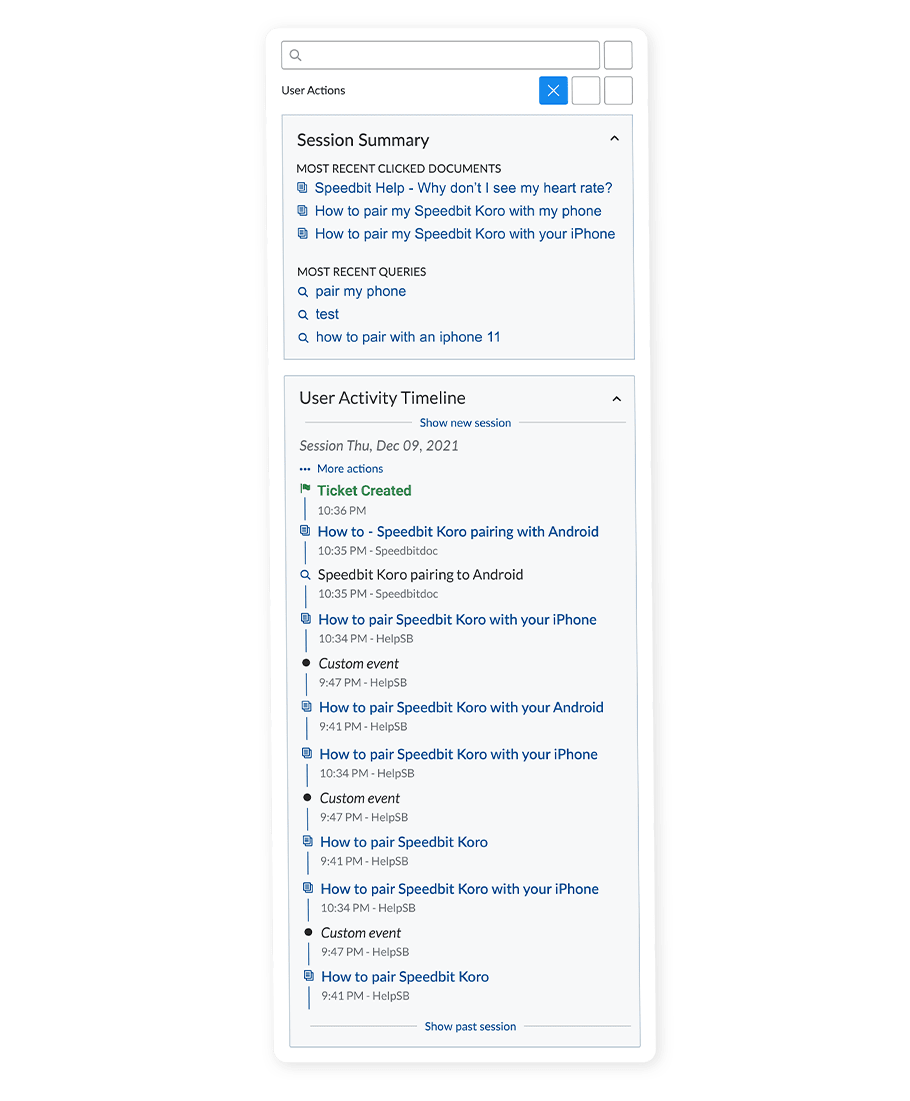
In the end, this latest iteration of User Actions is about the right information, right when agents need it. While the spirit of “give agents as much information as possible” is sound, at least in theory, User Actions is one of a number of resources an agent might scan while resolving a case.
Should an agent check User Actions today, they won’t find everything under the sun — just exactly what they need in the moment.
Dig Deeper
User Actions and Insight Panels are just the tip of the iceberg when it comes to transforming your contact center. Looking for more ideas? We’ve got you covered, in our Guide to Creating an AI-Powered Contact Center Experience in Salesforce. Download a copy today.

